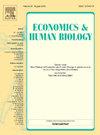Drivers of COVID-19 in U.S. counties: A wave-level analysis
IF 1.8
3区 医学
Q2 ECONOMICS
引用次数: 0
Abstract
Since the initial COVID-19 outbreak, researchers from a variety of scientific disciplines have sought to understand the factors influencing the evolution of cases and fatalities worldwide. This study proposes a two-stage econometric modeling approach that first identifies the speed of transmission followed by an examination of socioeconomic, demographic, health, epidemiological, climate, pollution, and political factors as potential drivers of COVID-19 spread across waves and counties in the United States. Utilizing daily data on confirmed cases and deaths from 3014 counties across 48 contiguous states and the District of Columbia from March 2020 to March 2022, we find that the trajectory of the pandemic and vaccination uptake patterns were influenced by a complex interplay of demographic characteristics, socioeconomic factors, health determinants, and policy interventions that differential affected viral transmissibility, mortality outcomes, and immunization efficacy across the six distinct pandemic waves. This analysis provides insights into pandemic dynamics across distinct waves and geographic regions.
美国各县COVID-19的驱动因素:波级分析
自COVID-19首次爆发以来,来自不同科学学科的研究人员一直试图了解影响全球病例和死亡演变的因素。本研究提出了一种两阶段的计量经济建模方法,首先确定传播速度,然后检查社会经济、人口、健康、流行病学、气候、污染和政治因素,这些因素是COVID-19在美国各地传播的潜在驱动因素。利用2020年3月至2022年3月期间来自48个相邻州和哥伦比亚特区的3014个县的确诊病例和死亡的每日数据,我们发现大流行的轨迹和疫苗接种模式受到人口统计学特征、社会经济因素、健康决定因素和政策干预的复杂相互作用的影响,这些因素差异影响了病毒传播、死亡率结果、以及六波不同大流行期间的免疫效力。这一分析提供了对不同波浪和地理区域的大流行动态的见解。
本文章由计算机程序翻译,如有差异,请以英文原文为准。
求助全文
约1分钟内获得全文
求助全文
来源期刊

Economics & Human Biology
医学-公共卫生、环境卫生与职业卫生
CiteScore
4.50
自引率
12.00%
发文量
85
审稿时长
61 days
期刊介绍:
Economics and Human Biology is devoted to the exploration of the effect of socio-economic processes on human beings as biological organisms. Research covered in this (quarterly) interdisciplinary journal is not bound by temporal or geographic limitations.
 求助内容:
求助内容: 应助结果提醒方式:
应助结果提醒方式:


